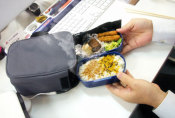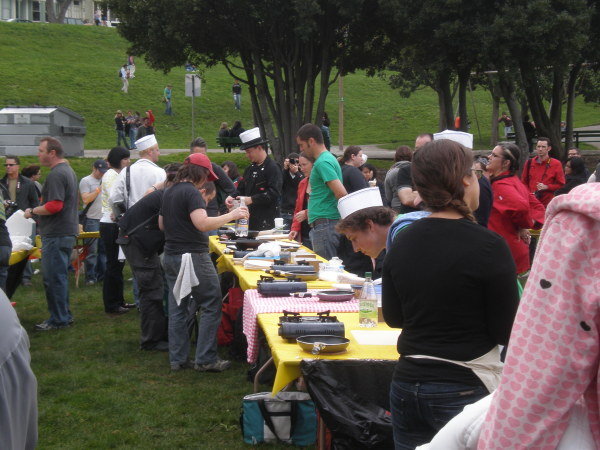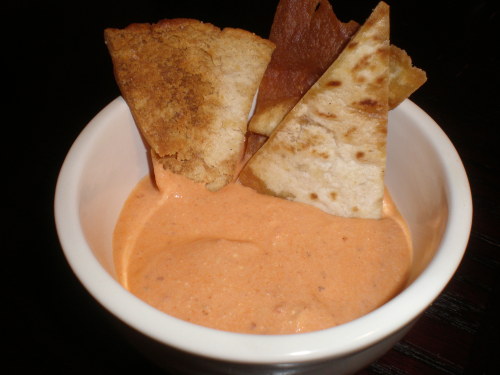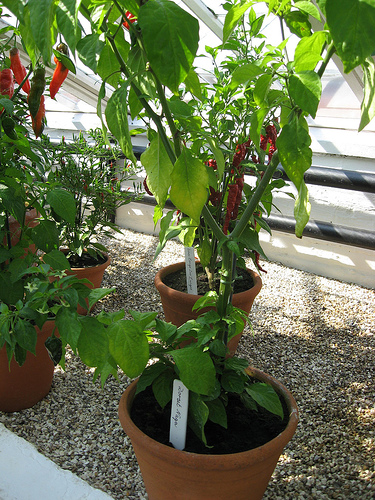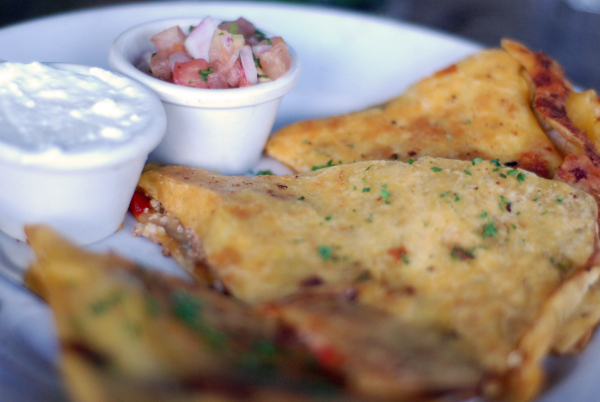
Sometimes you are working on a dish and you catch yourself tasting it over and over again, searching for that je ne sais qua - you think it needs something but you just can't figure out what. It is usually part of the foundation that is off; maybe salt, maybe acid or pepper.
Other times it is depth you are looking to add, or possibly the fifth taste, umami. From the kitchn comes these Eight Ways to Build Flavor. They are worth repeating and we've added some of our own too. You can't have enough tricks for bringing out flavor in your repertoire.
1. Searing the Meat - When cooking meat, taking time to sear the outside will add a heavenly depth of flavor to your final dish.
2. Deglazing the Pan - That dark layer at the bottom of your pan might look like burned food, but it's actually caramelized bits from everything you've been cooking. Once they've been deglazed, these bits melt into the background and form a savory flavor base in your dish.
3. Caramelizing the Onions - Like searing and deglazing, caramelizing onions and other vegetables by cooking them slowly gives your dish depth and adds interesting smoky and nutty flavors to your dish.
4. Toasting the Spices - This brings out the natural oils in the spices and boosts their aroma in the final dish. It's most effective to toast whole spices and then grind them.
5. Reducing the Sauce - Reducing concentrates all the flavors in a sauce. High, middle, and low notes become heightened, which enhances the overall taste of the sauce.
6. Salting to Taste - Salt reduces our perception of bitterness in dishes. If you've already added all the salt called for in the recipe, try adding a half teaspoon of salt or more and then see if you notice a difference.
7. Adding acidic and spicy ingredients - These also accentuate the high notes. If you've already added salt and you still think your dish needs "a little something," try adding a squeeze of lemon, a splash of vinegar, or a few shakes of Tabasco sauce.
8. Adding a splash of wine - Similar to adding an acidic ingredient, a splash of red or white wine can brighten the flavors in your dish.
We came up with Our Own 8 Ways to Build Flavor:
1. When you season with salt and pepper, season each layer - When you start with the onions, season. When you add the carrots, season again. When you add the potatoes, season again.
2. Bacon - This adds a layer of smokiness and saltiness along with pure unadultered porky goodness. Few dishes do not improve with the addition of bacon.
3. Zest - The zest of citrus adds a piquant quality without actually adding acid. Think outside lemon and lime too; a little orange or grapefruit zest can go a long way.
4. Soy Sauce - this is a shortcut to bringing umami to the party, just keep in mind that soy sauce is also quite salty. Soy sauce has almost the same sodium content of kosher salt by volume. So that you don't over do it, add a touch in the beginning. Low sodium soy sauce has on average 1/3rd less.
5. Bouillon - We especially like the "Better than Bouillon" brand. Keep in mind that every teaspoon adds another 250mg of sodium (or about 1/5th a teaspoon of kosher salt). I often make vegetable soup just by sauteeing veggies, and throwing them in a pot with some bouillon. Magnifique!
6. Paprika - Along the flavor profile of black pepper, paprika adds a spicy, an earthy component; and if you use a smoked paprika, a smoky component too. It also adds a bright ruddy color too which, keep in mind, may not go well with some dishes like a cream sauce.
7. Herbs - Adding fresh herbs right at the end of cooking or as a garnish brings bright notes and a blast of color. Surprisingly enough, flat leafed parsley can be added to almost anything.
8. Chocolate - The cacao brings to the table an earthiness that adds a richness to savory flavor that, when used in moderation, most people cannot recognize but find delicious. It is my secret ingredient in many of my stews and my chili; shh, don't tell anyone.
What other ways do you build flavor in your cooking?













